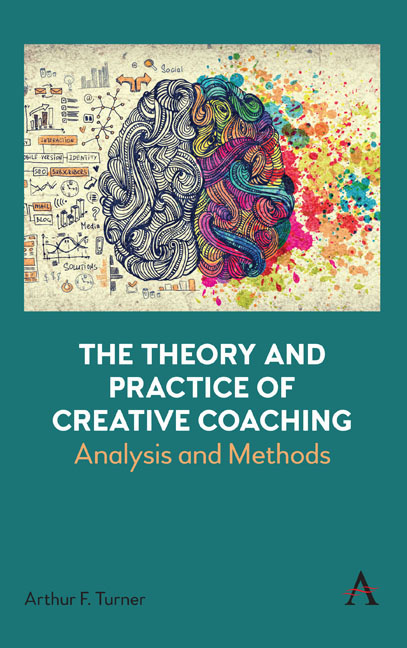Book contents
- Frontmatter
- Contents
- About the Author
- Preface
- Influences
- Introduction
- Section 1 Theory and Research
- Sections 2 and 3 Theory to Practice
- Section 2 Alternative Foci
- Section 3 Three Detailed Examples of Creativity in the Service of Executive Coaching (Walking, the Use of Finger Puppets and the Use of Music)
- Index
9 - The Use of Finger Puppets
Published online by Cambridge University Press: 28 February 2024
- Frontmatter
- Contents
- About the Author
- Preface
- Influences
- Introduction
- Section 1 Theory and Research
- Sections 2 and 3 Theory to Practice
- Section 2 Alternative Foci
- Section 3 Three Detailed Examples of Creativity in the Service of Executive Coaching (Walking, the Use of Finger Puppets and the Use of Music)
- Index
Summary
I have been writing about the use of finger puppets for the past six years, based largely in the context of leadership development, group work and classroom sessions with colleagues in the field of executive coaching. More recently (Turner and Kempster, 2022), a recorded podcast has explored the use of finger puppets in the broader context of playfulness in leadership development. This development work has led to their use in one-to-one coaching (see Kempster et al., 2014, Turner, 2016). The use of these specific artefacts is discussed in this chapter and fits in well with the more general idea of creativity (Page et al., 2013), in general, in and around the evolving coaching relationship (Maisel, 2020).
The use of puppets is an unusual technique and represents a more keenly aesthetic and experimental approach to coaching practice and fits in with the whole idea of arming the coach with tools in the spirit of experiential variety (Nelson, Zaccoro and Herman 2010). That (arming the coach with tools) is the notion of an executive coach who utilizes a wide range of approaches and techniques in which to engage their clients to elicit reflection. In their use the puppets are a humanistic rather than a mechanical concept and is one of those tools that edges the coach towards the coaching maturity that David Clutterbuck has underlined in a move away from linear, model-focused coaching (Lowe, 2021, Clutterbuck and Megginson, 2011).
This approach of using types of finger puppets was partly the start but also the continuous thread in my investigation about coaching practice that has led to looking beyond models, official approaches and more structured instructions on ‘how-to-do-coaching’ to a more dynamic and emergent style that depends on techniques and props. The use of finger puppets is an age-old human tradition that acts as a catalyst for change in human behaviour and thinking.
Although there are many finger puppets on the market, mainly aimed at children, the finger puppets I have been using come from two sources. The basic idea is a simple one. The puppets are small enough to fit on an index finger (although there is no reason (other than bulk) to using hand-puppets, or puppets on strings, although I have never tried string-puppets as a technique).
- Type
- Chapter
- Information
- The Theory and Practice of Creative CoachingAnalysis and Methods, pp. 107 - 118Publisher: Anthem PressPrint publication year: 2023



